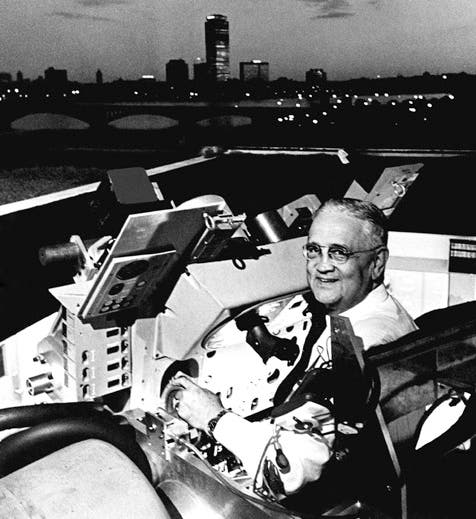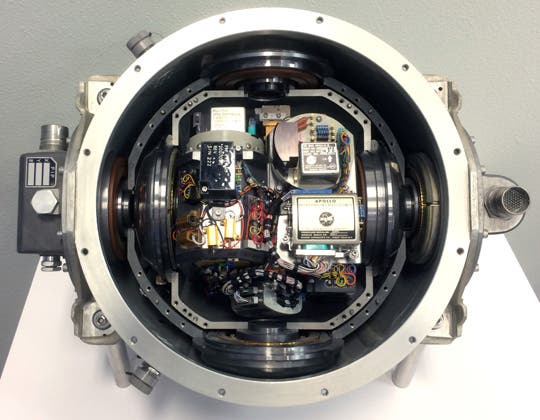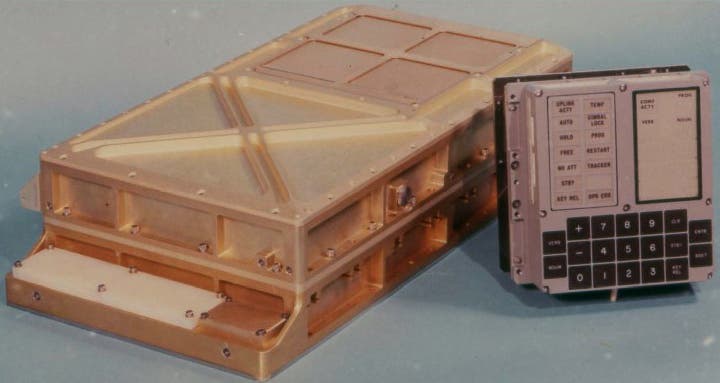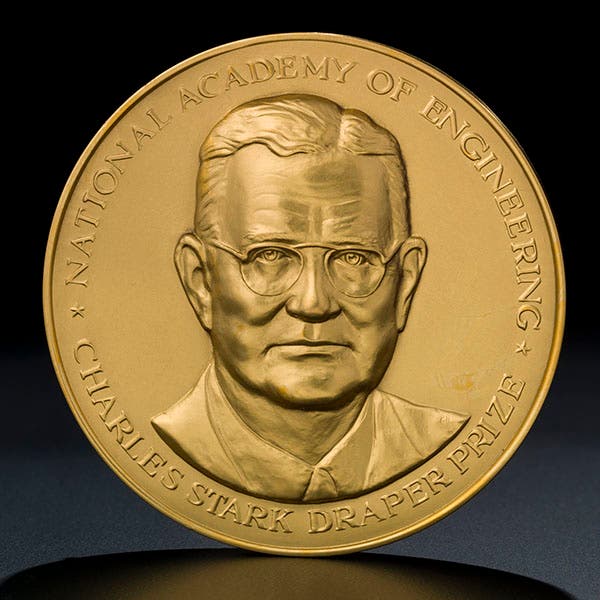Scientist of the Day - Charles Stark Draper
Charles Stark "Doc" Draper, an American engineer, was born Oct. 2, 1901. Draper liked to call himself an "instrumental engineer" because of the direction of his interests. During World War II, he helped design a new bombsite for naval guns that was much superior to a conventional gunsight, because it could keep up with Japanese planes flying at close quarters. After the War, Draper set up a lab at MIT called the Instrumentation Lab. The Lab began designing guidance systems for aircraft and ships. Draper and his colleagues specialized in inertial guidance systems, which rely on two kinds of instruments: gyroscopes and accelerometers, set within gimbals. The gyroscopes detect any change in orientation of the ship or plane, and the accelerometers detect any changes in velocity. In 1953, a B-29 bomber flew from Boston to California, under the sole guidance of a Draper inertial system, with no input from the pilot. The day of instrument-controlled aircraft had arrived. We see here a model inertial guidance system, with the gyros in red (second image) and Draper holding his model (third image).
One of the lab's first large contracts was to design a guidance system for the new Polaris submarine-fired missile. Unlike the B-29 guidance system, which was so enormous it had to be lowered into the plane by a crane, the Polaris unit had to be small, to fit inside the missile, and self-contained, so that it required no input from the outside and thus could not be jammed. Even miniaturized, Draper's guidance systems worked extremely well.
So the Instrumentation Laboratory was sitting in just the right spot in 1961, when President Kennedy announced that we were going to the Moon by the end of the decade and gave NASA the responsibility to carry this out. The Apollo spacecraft would need a precise and reliable guidance system that occupied as little space as possible. The very first contract awarded by NASA for the Apollo Project was given to the MIT Instrumentation Lab, awarded without competitive bidding, which caused some consternation in the aeronautics industry. Draper's lab was to supply both the guidance systems and the guidance computers for the Apollo spacecraft and landers.
The task was a daunting one, especially since the Lab was instructed by NASA that the astronauts had to be involved, and that anything that could be done by a human should be done by a human. The system that Draper and his team designed was compact and precise and fit into the space allotted, and it relied on the astronauts to take fixes on stars and planets and input them into the computer, should the gyroscopes show any tendency to "drift" (fourth image).
The Apollo guidance system worked flawlessly, but for most of us, the real triumph was the onboard Guidance Computer. The computer, like the inertial system, had to fit in one cubic foot of space, and it was designed from scratch by the lab, utilizing the brand-new integrated circuits that Texas Instruments and Fairchild had just put on the market. The computer had a keyboard (DSKY) with which the astronauts could ask questions and input data, and in spite of the fact that it had, by today's standards, an amazingly small memory capacity, with the programs hard-wired in, it did the job, taking 8 command modules to the Moon, landing six LEMs on the lunar surface and returning them to orbit, and them bringing everyone and everything successfully back home.
The Instrumentation Lab was spun off from MIT in the 1970s, when students protested the university's involvement in military contracts, and it was reconstituted as an independent entity and renamed the Charles Stark Draper Laboratory, a name that it retains to this day. In 1989, the National Academy of Engineering instituted a Nobel Prize for engineering, which they named the Charles Stark Draper Prize (sixth image). Interestingly, the first recipients were Jack S. Kilby and Robert N. Noyce, who independently invented the integrated circuit, so instrumental in the success of the Apollo Guidance Computer.
The first image shows Draper in the first Apollo simulator, on the roof of the Instrumentation lab at MIT in Cambridge.
Dr. William B. Ashworth, Jr., Consultant for the History of Science, Linda Hall Library and Associate Professor, Department of History, University of Missouri-Kansas City. Comments or corrections are welcome; please direct to ashworthw@umkc.edu.











